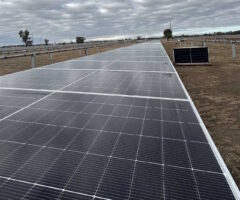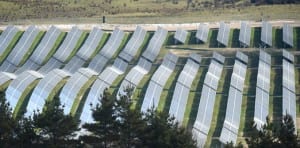Researchers from the University of New South Wales’ Global Water Institute are developing a solar-powered desalination technology intended to protect Australia against food shortages during drought.
For a variety of reasons – not least of all the increasingly volatile climate conditions faced across the country – the security of water supply for agricultural irrigation is a growing concern.
The new desalination technology – called Capacitive Deionization (CDI) – is believed to have “significant potential to revolutionise” agricultural irrigation and secure safe and healthy water supply during droughts and even as groundwater sources are becoming increasingly saline.
According to UNSW, “CDI removes salt from brackish water by passing water through a stack of electrode pairs with positive ions such as sodium (“cations”) attracted to the cathode and negative ions such as chloride (“anions”) attracted to the anode. When a voltage is applied across the electrodes, a desalted stream of water is produced.”
What makes the UNSW work so important is the introduction of solar energy as a means to power the desalination process.
Not only is the process thus removed from reliance on mains power and transitioned to a renewable energy source, combining the desalination technology with solar makes the process specifically valuable to those in need of secure supplies of fresh water for agricultural irrigation, often living in remote locations and disconnected from large-scale electricity grids.
 “For this project, we innovated in both the mode of operation of the established technology of membrane capacitive deionisation (MCDI) and the use of solar energy combined with energy recovery to power the device,” said Scientia Professor David Waite, Executive Director of UNSW Centre of Transformational Environmental Technologies (pictured above).
“For this project, we innovated in both the mode of operation of the established technology of membrane capacitive deionisation (MCDI) and the use of solar energy combined with energy recovery to power the device,” said Scientia Professor David Waite, Executive Director of UNSW Centre of Transformational Environmental Technologies (pictured above).
“Scope exists for use of this technology in remote parts of Western Australia and the Northern Territory where the treatment of brackish water – typically the only water available – has been problematic using existing technology.”
The idea for the project originally stems from Sir Ratan Tata, the Chairman of the philanthropic Tata Trusts in India, who challenged UNSW researchers to help find ways to provide clean water to Indian villages.
Professor Waite from the School of Civil and Environmental Engineering accepted Sir Tata’s challenge and, with support from Professor John Fletcher from the School of Electrical Engineering and Telecommunications, constructed the first solar-powered prototype.
Since then, second and third generation prototypes have been constructed which reduce energy usage through recovering of the portion of energy used. These second and third generation prototypes have been constructed with funding from an ARC Linkage grant combined with industry support from Goldwind Environmental Technologies.







